From August 2021, Google made it essential for new Android apps to publish with the Android App Bundles on Google Play Store. For app owners and developers, this is extremely important since it reduces the app size and makes it easily downloadable for users.
The purpose behind introducing the Android App Bundle was to provide a seamless app download experience and allow users to efficiently utilize the app features on their devices. It also enables advanced features like Play Feature Delivery, Play Assets Delivery, and instance experience.
For app owners and developers, building android app bundle for their apps matters significantly since it ensures the app gets published on Google Play Store as per app submission guidelines and provides desired user experience across all devices smoothly.
If you are not familiar with or seek expert guidance on building and deploying Android App Bundles for your Android application, here, you will learn how to build and deploy Android App Bundles.
So let’s dive into
Table of Contents
What Is Android App Bundle?
An android app bundle is the publishing format. It is compiled code and resources of a mobile application which is used for signing into Google Play Store. Android app bundle is different from the APK generation. Google Play Store utilizes app bundles to create and serve optimized APKs for every device configuration.
Thus, only the core and resources which are required for a particular device are downloaded to run the published application. There is no need for building, signing, and managing multiple APKs to optimize support for various devices. Through this approach, users get a smaller and better optimized downloading experience. Therefore, it is also considered one of the top Android app development trends.
How Does Android App Bundle Work?
Android app bundle plays a significant role in providing a seamless app download experience and improved user experience. Prior to the introduction of the app bundle concept, when a user would download an app from Google Play Store, the app gets downloaded in the format of an APK file.
This file includes everything required to install and run the app on the user’s device. Developers would have to generate one or more APK files utilizing Android Studio and upload them to the Play Store.
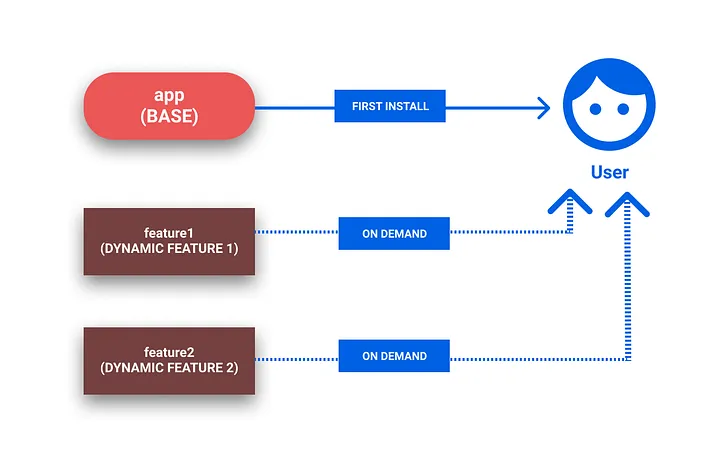
To provide support for multiple device types, screen sizes, and locals, developers have had to either create and upload several APK files tailored for each target device and locale. Or, they need to generate a large universal APK that incorporates all of the different configuration resources and platform binaries within a single codebase.
App Bundles Solve Traditional Problems with APK Generation
As a result, it takes a lot of development efforts and repetition of the same process for releasing the app. The APK format of publishing apps results in longer app downloads and increased storage use on the device. Consequently, it affects download speed which ultimately hampers conversion rate falling down by 1% for every 6MB increment in APK file size.
And Android app bundle solves these problems by giving a single package facility to Android app developers on the Android Studio platform. The Android app bundle is basically a ZIP file that contains all the essential files to build APK files for the devices and locales the app project has proved to support.
So, after using the android app bundle, when a user installs the app, Google Play gets information about the user’s device such as screen size, locale, and processor architecture. Based on this information, the required pre-generated APK files are sent to the user’s device. As a result, downloading becomes easy and only those files are used which are suitable as per the user’s device requirements particularly.
Why Do Businesses Need An Android App Bundle?
Reduce App Size
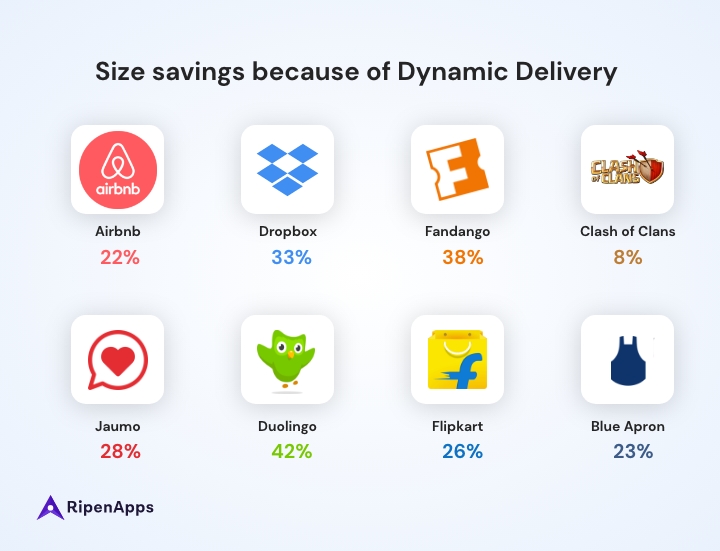
Size is one of the key factors which directly affects the download as well as its performance on mobile devices. The more size an app has, the more challenging it would be in downloading. Here, the android app bundle helps in reducing the size of the Android app. By utilizing Android app bundles, developers have witnessed around 20% size reduction in the app size as compared to using APK. Many popular Android apps have witnessed astounding positive results in terms of app downloads and usage after decreasing their size by 20% with app bundles. Below are some of the top examples that reduced their app size between 1% – 50%. (Source)
Dynamic Delivery
Google Play uses a new process of delivering the APK files which is Dynamic Delivery. It means when Google Play receives the app bundle, it distributes the app in proportion to the user’s device-specific requirements and usage. It simply is like feeding the user what they need. For instance, if an Android app supports different screen sizes and CPU architectures. So, instead of providing everything to users, it will give users proper image densities and ABI resources, specific language as per the device or smartphone specifications.
Increased App Downloads And Reduced Uninstallations
Fast and seamless app download and usage experiences are one of the top reasons as to why Android is the favorable platform for mobile app development. For this purpose, app bundle helps the app in ensuring faster downloads and decreasing uninstallation rates. Users generally don’t like to install the app higher in size. It is because heavy-size apps occupy large storage space on mobile devices and thus impact overall speed and performance. But app bundle reduces the app size. As a result, it makes it easier to download the app and allows users to use only the required features as per their device specifications. This ultimately results in enhancing the speed and performance of the app.
Dynamic Feature Modules
It is one of the top advantages of the Android app bundle. It allows the app to segregate a particular module and deliver it when needed. This dynamic feature module enables the app to download the code as per the demand. For instance, let’s say an app has two features: audio streaming and text chatting. So, if the user hasn’t much interest in using the audio streaming then it can be segregated as a separate module in its Gradle file as a Dynamic feature module. As a result, when generating dynamic split APKs, Google Play will make a separate split APK file for the dynamic module and will deliver only when it is needed.
Better Efficiency
App bundle helps in Android app development by enhancing the app’s efficiency. With app bundles, developers need to create one artifact which contains all of your app’s collected code, native libraries, and other resources. Consequently, you are no longer needed to create, sign, upload, and handle version codes for different APKs. As a result, the efficiency of the app gets increased when users install the app with an android app bundle.
How To Build An Android App Bundle?
To build Android app bundle, you will need to use Android Studio 3.2 or its versions above. If you are using Android Studio, then you can use the option to build your project as a signed app bundle in a few clicks. In case, you are not utilizing the IDE, you need to use app bundle from the command line.
And then, you can deploy or upload the app bundle to the Play Console to test or publish the application. Since it is purely a technical task, you would need assistance from either an Android developer or hire Android app development company. In order to build android app bundle using Android Studio, follow the below steps:
Step 1:
Download Android Studio 3.2 or higher version. From this tool, you will build the app bundle for your android mobile application. It will allow you to add feature modules and create bundles. When you successfully download Android Studio, first start with modifying your app’s build.gradle file.
Step 2:
To create the feature1 module, go to File>New>New Module in Android Studio.
From this, choose the Dynamic Feature Module option which appears in the dialog box, and click Next. After this,
Choose the app module as the Base application module.
Mention feature1 as the Module name.
Mention a package name and a Minimum API Level for the feature1 module, and then click Next.
In the Configure On-Demand Options.
Choose the Module title as Feature 1.
Ensure the boxes Enable on-demand and fusing.
Then, select the finish.
Similarly, you need to repeat the same process for feature2.
Step 3:
Return to your app’s build.gradle file. Check whether the dynamic features are described properly.
Step 4:
After this, go back to your feature1 and feature2’s build.gradle files to make sure the app module is added as a dependency.
Step 5:
Now, start writing the code in the app module to allow downloading the feature1 module when it is needed. By this stage, the app bundle is ready and now you can deploy or upload it to Google Play.
How To Deploy App Bundles Using Android Studio?
You can deploy app bundles to a connected device straight from the IDE. It is because Android Studio and Google Play use the same tools to extract and install APKs on a device. With a default feature, when you deploy the app from Android Studio to a connected device, the IDE builds and deploys APKs for the targeted device configuration.
This is because creating APKs for a specific device configuration is much faster than building an app bundle for all device configurations that your offer supports. Here are the steps to deploy app bundles with Android studio:
- Choose Run>Edit Configurations from the menu bar.
- Choose a run/debug configuration from the left plane.
- In the right pane, select the General tab.
- Choose the APK from the app bundle from the dropdown menu next to Deploy.
- If the app bundle contains an instant app feature, then check the box next to Deploy as an instant app.
- If the app contains feature modules, you can choose which modules you wish to deploy by checking the box next to each module. Android Studio, by default, deployed all feature modules and always deployed the base app module.
- Select Apple or Ok
To Wrap Up
App bundles are truly smart and effective ways to provide fast downloading and seamless app performance experience. It helps you ensure your target users are able to use your Android application efficiently. And thus, it helps you in achieving greater results. Therefore, Google Play gives it a high priority.
However, since it requires expertise and experience to intelligently and accurately build and deploy app bundles, it is wise to consult the top Android app development company like RipenApps that specializes in this field. This will ensure your Android app gets approval from Google Play Store for publishing and satisfies users as per their specific needs.
Schedule a Call and Discuss Your Android App Project

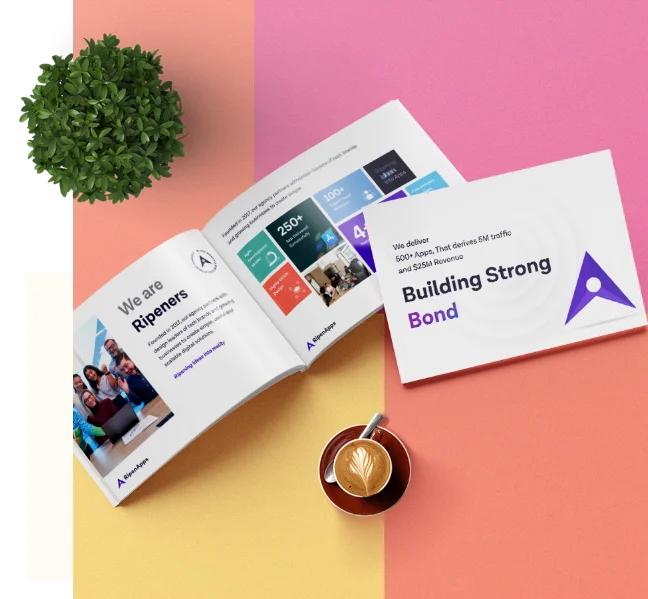
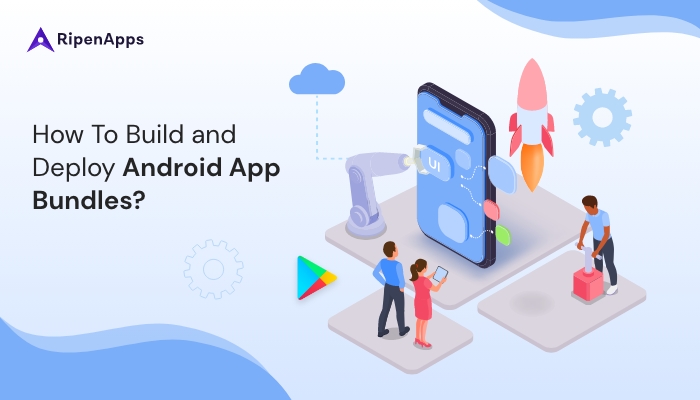




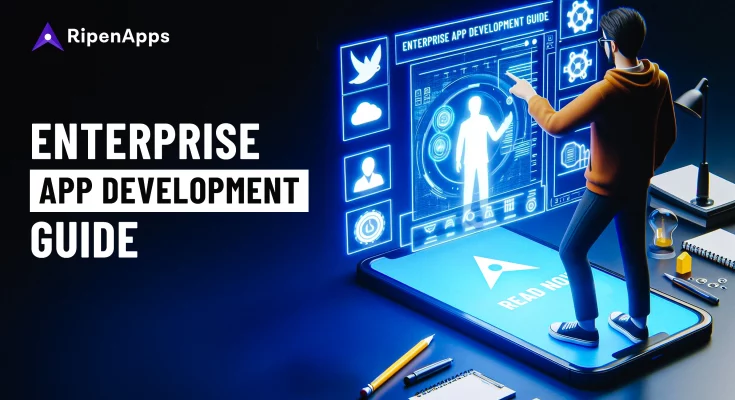


 India
India USA
USA Australia
Australia Canada
Canada UK
UK UAE
UAE